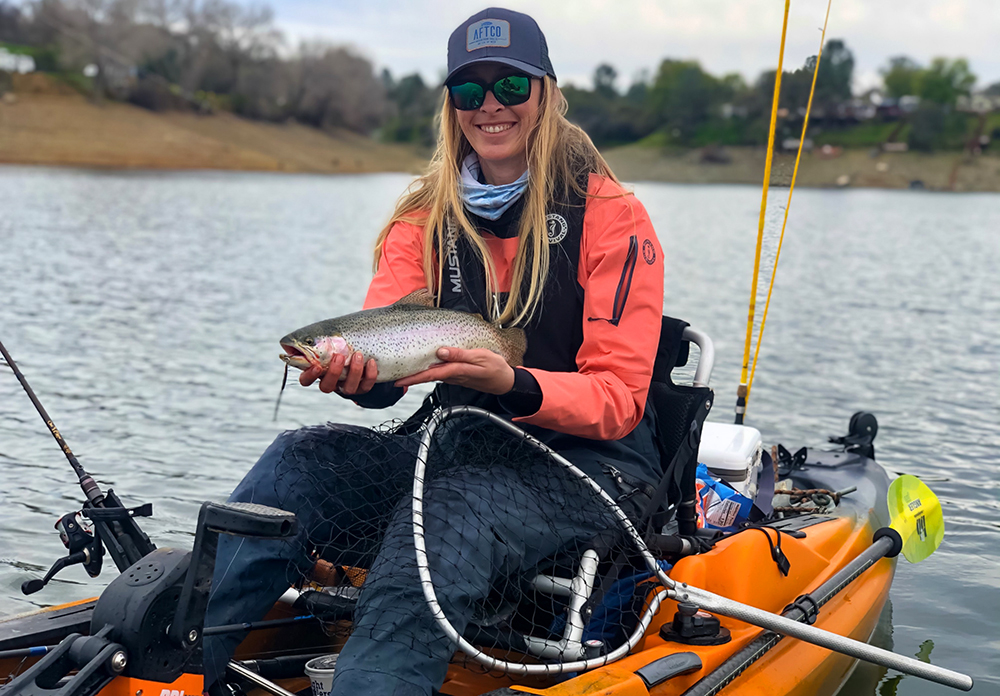Cold Water Boating Safety: Essential Tips for Kayakers, SUP Users, and Small Craft Boaters
Cold water paddling and boating can be exhilarating - but it also comes with serious risks. Whether you're kayak fishing, stand-up paddleboarding, or enjoying a quiet canoe trip, understanding cold water safety is critical to preventing accidents and ensuring a safe return.
This guide covers everything from cold water immersion prevention to hypothermia survival tips, helping you stay safe on the water year-round.
Why Cold-Water Safety Matters
Cold water is 25 times more effective than air at pulling heat from your body. Even water temperatures above freezing can lead to cold shock, loss of dexterity, and hypothermia in minutes. Many paddlers underestimate the danger, especially in spring when air temperatures rise but water remains dangerously cold.
The Rule of 120
A helpful guideline is the "Rule of 120": if the sum of the air temperature and water temperature is less than 120 degrees Fahrenheit, you should wear thermal protection like a wetsuit or drysuit. But even this rule has limitations - always dress for the water, not the air.
Cold Water Boating Safety Tips
Whether you're paddling solo or with a group, these cold water boating safety tips apply to all small craft users:
- Always wear a PFD (life jacket) - it's your first line of defense.
- Dress for immersion: use wetsuits or drysuits in water below 60 degrees Fahrenheit.
- Avoid cotton - it retains water and accelerates heat loss.
- Stay close to shore when possible.
- File a float plan with someone on land.
- Carry a whistle, light, and waterproof communication device.
- Know your limits - don't paddle alone in risky conditions.
Cold Water Immersion Prevention
Capsizing or falling overboard in cold water can be life-threatening. Here's how to reduce the risk:
- Check weather and water temperatures before launching.
- Use stable watercraft and avoid overloading.
- Practice self-rescue techniques in controlled environments.
- Avoid alcohol - it impairs judgment and accelerates heat loss.
Cold Water Survival Tips
If immersion happens, your survival depends on quick action:
- Control your breathing - cold shock causes involuntary gasping.
- Use the HELP position (Heat Escape Lessening Posture): cross arms and legs to conserve heat.
- Climb onto your craft or floating debris to get out of the water.
- Stay still - movement increases heat loss.
- Keep your head above water - it's the fastest area for heat loss.
Hypothermia Prevention While Boating
Hypothermia can occur in water as warm as 70 degrees Fahrenheit. Symptoms include shivering, confusion, and loss of coordination. To prevent it:
- Layer clothing: moisture-wicking base, insulating mid-layer, waterproof outer shell.
- Bring dry clothes in a dry bag.
- Pack high-energy snacks and warm drinks.
- Know the signs and act quickly if someone shows symptoms.
Pre-Launch Safety Checklist
Before heading out, run through this quick checklist:
- Check air and water temperatures
- Dress for immersion
- Wear a properly fitted PFD
- File a float plan
- Pack emergency gear (whistle, light, dry clothes, snacks)
- Inspect your craft and gear
- Know your route and local hazards

Cold Water Immersion Gear List
Here's what to bring for cold water paddling:
- Drysuit or wetsuit
- Neoprene gloves and boots
- Insulated hat
- Waterproof communication device
- Throw rope or tow line
- First aid kit
- Personal Locator Beacon (PLB)
- Emergency blanket or bivy sack
Post-Capsize Self-Rescue Steps
If you capsize:
- Stay calm and control your breathing.
- Hold onto your craft - don't swim unless absolutely necessary.
- Use re-entry techniques or wait for help.
- Get out of wet clothes and into dry layers ASAP.
- Seek shelter and warmth immediately.
Final Thoughts
Cold water paddling is rewarding - but only when done safely. By following these cold-water paddling safety tips, you'll protect yourself and others from the dangers of immersion and hypothermia. Whether you're kayak fishing, paddleboarding, or boating recreationally, preparation is key.
Stay safe, stay warm, and enjoy the water responsibly.






